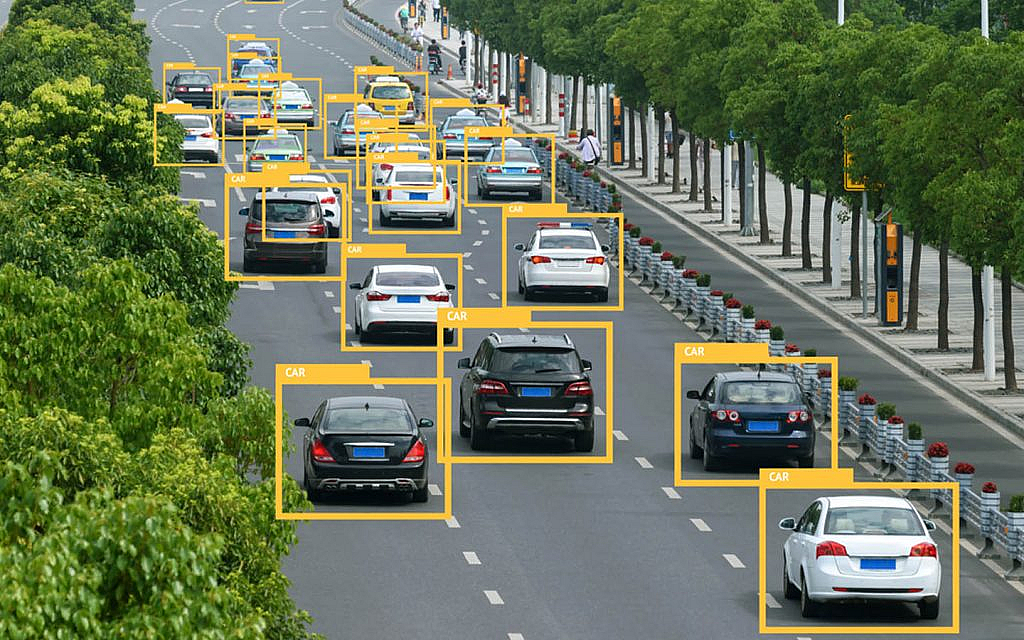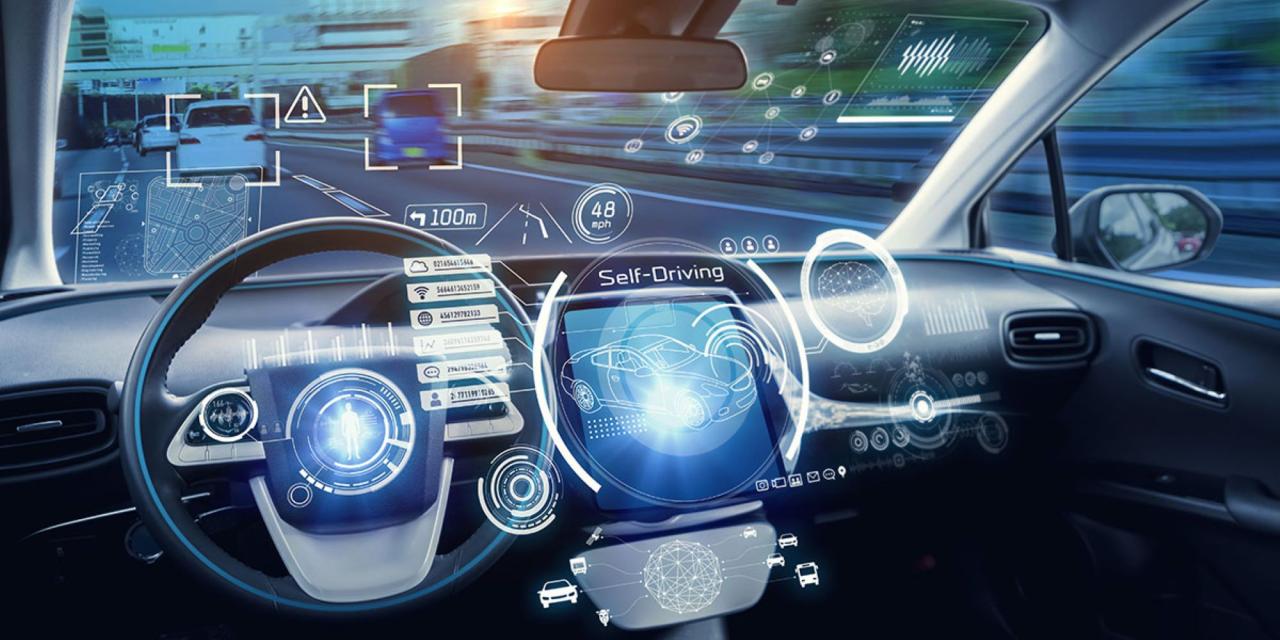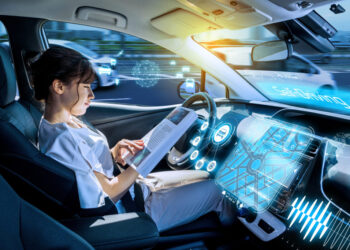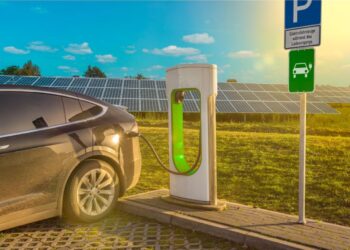The automobile is no longer just a mechanical device; it’s a sophisticated, intelligent machine powered by software and data. At the core of this transformation is Artificial Intelligence (AI), a technology that is fundamentally changing how we design, build, and interact with vehicles. AI in cars is moving beyond simple automation to create a new era of transportation that is safer, more efficient, and deeply personalized. From predicting traffic jams before they happen to enabling a car to learn your driving habits, AI is turning the vehicle into a smart, proactive partner on the road.
This comprehensive guide will take you on a deep dive into the most significant ways AI is revolutionizing the automotive industry. We will explore its role in autonomous driving, its impact on safety and efficiency, the personalization of the in-cabin experience, and the ethical considerations that come with putting AI in the driver’s seat. Whether you’re a daily commuter, a technology enthusiast, or an industry professional, understanding these advancements is crucial. The future of transportation is being defined by AI, and its influence is reshaping our world, one smart vehicle at a time.
A. AI and Autonomous Driving

Autonomous driving is the most visible and ambitious application of AI in cars. It’s a complex task that requires a vehicle to perceive the world, make intelligent decisions, and execute precise maneuvers—all without human intervention. AI is the brain that makes this possible.
- A. Perception and Sensor Fusion: A self-driving car must “see” the world around it with a level of detail and accuracy that surpasses human capability. AI is the key to this process, known as sensor fusion. The AI system takes data from multiple sensors—like cameras, radar, and LiDAR—and combines it to create a single, comprehensive, 3D model of the vehicle’s surroundings. It can then identify and classify every object, distinguishing between a pedestrian, a cyclist, a traffic cone, and a parked car with incredible accuracy.
- B. Prediction and Decision-Making: Once the AI has a clear picture of its environment, it must predict the behavior of other road users. This is a monumentally complex task. AI models are trained on billions of miles of real-world and simulated driving data to anticipate everything from a sudden lane change to a child running into the street. The AI then uses this predictive power to make safe and efficient decisions in a fraction of a second, such as when to brake, how to steer, and where to position the vehicle.
- C. Planning and Control: The final step is for the AI to execute its plan. AI-powered control systems manage the vehicle’s steering, braking, and acceleration with a level of precision that a human driver cannot match. This allows for smoother rides, improved energy efficiency, and a more comfortable journey.
- D. Over-the-Air (OTA) Updates: Unlike a human driver whose skills are relatively static, an AI driver can get better over time. AI algorithms and data can be updated wirelessly through over-the-air (OTA) updates. This means a car can learn from its experiences and improve its performance, safety, and efficiency long after it leaves the factory. The car is no longer a static product; it is a continuously evolving service.
B. Enhancing Safety and Efficiency
Even without full autonomy, AI is making cars smarter and safer. It’s moving from a simple alert system to a proactive partner that can actively prevent accidents and optimize performance.
- A. Advanced Driver Assistance Systems (ADAS): AI is the core technology behind modern ADAS features.
- A. Adaptive Cruise Control: AI allows the car to not only maintain a set speed but also to dynamically adjust its speed to maintain a safe distance from the vehicle ahead.
- B. Automatic Emergency Braking (AEB): Using cameras and radar, AI can detect an impending collision and apply the brakes automatically if the driver fails to react in time. This has been proven to significantly reduce the number of rear-end collisions.
- C. Lane-Keeping Assist: AI can monitor lane markings and gently steer the vehicle back into its lane if it begins to drift, preventing accidents caused by distracted driving.
- B. Predictive Maintenance: AI analyzes a car’s performance data in real-time to predict when a component might fail. This allows the car to alert the owner to a potential problem before it becomes a major mechanical issue. For example, AI can detect subtle changes in a car’s engine noise or temperature that indicate a future problem, scheduling a service appointment automatically. This saves owners money and prevents unexpected breakdowns.
- C. Optimized Energy Management: In electric vehicles, AI is crucial for optimizing battery performance and range. AI can learn your driving habits, analyze traffic patterns, and even take into account the weather and topography to provide a more accurate range estimate. It can also optimize the charging schedule to minimize cost and maximize battery health over time.
C. The Personalized In-Cabin Experience
AI is not just about the car’s performance; it’s about the person inside it. AI is turning the car’s interior into a personalized, intelligent space that caters to the unique needs and preferences of each occupant.
- A. Voice-Activated Assistants: AI-powered voice assistants allow drivers to control everything from navigation and music to climate control and phone calls using simple voice commands. The AI can understand natural language, making the interaction intuitive and hands-free, which enhances safety.
- B. Driver and Occupant Monitoring: AI is being used to monitor the driver’s state of alertness. Using in-cabin cameras, AI can detect signs of drowsiness or distraction (e.g., yawning, eyes looking away from the road) and issue a warning. It can also recognize different occupants and automatically adjust the seat position, climate control, and entertainment settings for each person.
- C. Predictive and Contextual Infotainment: AI can learn your preferences and provide personalized recommendations for music, podcasts, or routes. It can even anticipate your needs based on the context of your journey—for example, suggesting a coffee shop when you’re on a long drive or finding the nearest charging station when your battery is low.
- D. Augmented Reality (AR) Displays: The future of in-cabin displays is a combination of AI and augmented reality. The car’s windshield could become a heads-up display that uses AI to project useful information—like navigation arrows or warnings about pedestrians—directly onto the road ahead, creating a more intuitive and immersive driving experience.
D. Ethical and Societal Challenges

The rise of AI in cars, while promising, is not without its challenges. These are not just technical problems but profound ethical and societal questions that need to be addressed.
- A. The “Trolley Problem” and Ethical Decision-Making: How should an AI-driven car be programmed to handle an unavoidable accident? Should it prioritize the safety of the occupants over a pedestrian? Or should it minimize harm to everyone involved, even if it means risking the occupants? These are complex ethical dilemmas that society, not just engineers, must solve.
- B. Data Privacy and Cybersecurity: The modern car is a data-generating machine, collecting information on everything from your location to your driving habits. The security of this data is paramount. A hacked vehicle could not only compromise a driver’s privacy but could also be a physical threat. Ensuring robust cybersecurity is a non-negotiable requirement for the future of AI in cars.
- C. Job Displacement: The widespread adoption of autonomous vehicles, particularly in the trucking and taxi industries, will likely lead to job displacement for millions of professional drivers. This is a significant societal challenge that policymakers must prepare for.
- D. Public Trust and Regulation: For self-driving cars to become a reality, the public must trust the technology. Every accident involving an autonomous vehicle, regardless of who is at fault, erodes that trust. Governments and regulatory bodies must create a clear and consistent legal framework that encourages innovation while ensuring public safety.
Conclusion
Artificial Intelligence is no longer just a feature in a car; it is the central nervous system that is driving the automotive industry toward an entirely new future. From the sensors that allow a car to see to the algorithms that enable it to think, AI is the key to unlocking a world of safer, more efficient, and more personalized transportation. The journey toward full autonomy is a testament to human ingenuity and a complex dance between technological breakthroughs and societal readiness. While the challenges of ethics, privacy, and job displacement are significant, the potential benefits—from a dramatic reduction in road accidents to a future with less traffic and pollution—are immense.
The ultimate goal of AI in cars is not just to replace the driver but to create a new kind of transportation ecosystem. A world where your car is an intelligent partner, a mobile extension of your digital life, and an active participant in creating a more efficient and sustainable society. This transformation is already underway, and it is happening at an incredible pace. The cars of tomorrow are being built today, and they are intelligent, interconnected, and poised to change everything we know about getting from A to B. The future of the road is not just electric; it’s intelligent, and it’s being powered by the groundbreaking innovations of AI.




